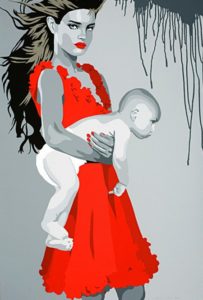
www.galleri-pingvin.no
”He never wants to sleep! Can I get help?”
”It’s all my fault! I was so stressed and nervous during pregnancy. Why couldn’t I relax?”
”How do I learn to love my child? Can you give me some tools ? Why don’t things work between us, he’s such a cute boy!”
These are common questions and complaints among parents. Parent-infant therapists aim to help mother and child in a direct way, often in an emergency situation. But we also hope for long-term effects; we want to increase the prospects of a safe childhood and a secure attachment. Another goal is to help the parents feel pride and love of their child. We do not accomplish this by admonishing or cheering up the parents. Rather, we investigate which unconscious factors make it harder for them to enjoy being with their baby.
Over the years after the millenium, clinical experiences indicated that the mother-infant psychoanalytic (MIP) method could yield positive results for distressed babies and parents. But it also raised questions: The baby cannot talk about his distressing emotions. How are we to understand his communication? How do we help the mother in the best way? And how do we communicate with mother and baby so that they get the most out of it, albeit on very different developmental levels?
I decided to compare the results of MIP with ordinary child health centre care (CHC in English, “BVC” in Swedish), the usual Swedish health care for babies with their mothers. This proud and ambitious tradition of health care also aims at helping mothers with psychological troubles, such as postnatal depression. Beyond comparing results of the two treatment modes, I wanted to investigate which mothers and babies might benefit most from either mode.In other words, it was time for research! The research project started in 2005. It also inspired me to contact the Mama Mia Child Health Centre and suggest I work there with babies and mothers. It proved to be a thrilling and surprising for a psychoanalyst! Click here to know more.
